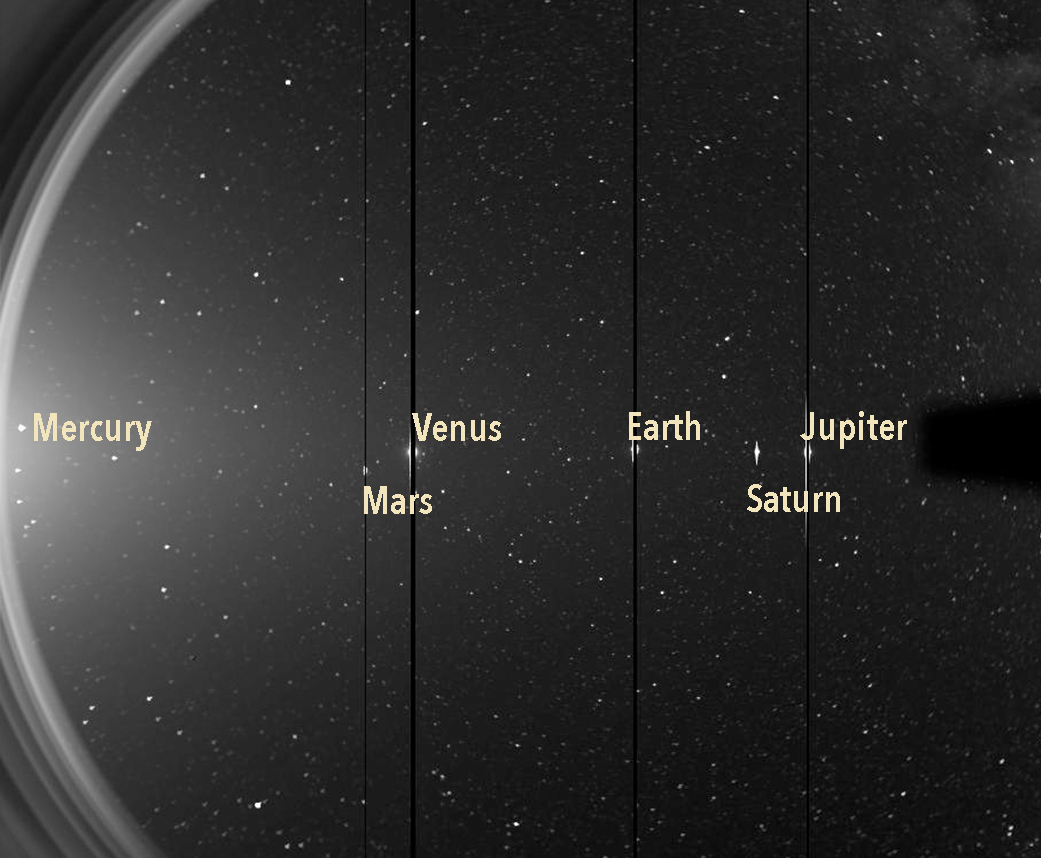A string of planets in our solar system sparkles in photos from 3 different sun probes

Turns out sungazing is not the only thing NASA's solar spacecraft do.
Three missions that focus on the activities of our nearest star — Parker Solar Probe, the Solar and Terrestrial Relations Observatory (STEREO) and Solar Orbiter (a partnership with the European Space Agency) — have captured some incredible images showing several worlds in our solar system.
These spacecraft are flying in different areas of our neighborhood on a quest to understand solar phenomena such as the extreme heat of the sun's outer atmosphere, the distribution of dust in our solar system or the production of the solar wind — the constant stream of particles coming from our sun. But each spacecraft caught amazing views of planets that NASA's Goddard Space Flight Center in Maryland shared in a recent press release.
Solar Orbiter
This joint mission with ESA will eventually leave the plane of the solar system to study the sun's poles. The spacecraft first transmitted test images in July 2020, about five months after its launch.
On Nov. 18 came a particularly stunning image, when Solar Orbiter captured three planets in the same view. From left to right, you can see Venus (which appears exceedingly bright as the sun bounces off the planet's clouds), Uranus, Earth and Mars. The sun is just out of the image view on the right-hand side of the frame.
Plot twist! It turns out that planet Uranus is also visible in our #SolarOrbiter video 😄In the thread below @markmccaughrean explains how it was found 👇Thank you, cosmic detectives! 🕵️♀️🕵️♂️#science #CitizenScience #Venus #Earth #Mars #Uranus https://t.co/ZBj3LMOat1January 28, 2021
Solar Orbiter was roughly 155.7 million miles (250.6 million kilometers) away from Earth when the data was transmitted, which is a little less than twice the distance from the sun to Earth, or two astronomical units (AU). A single AU is roughly 93 million miles (150 million km).
Parker Solar Probe
Our #ParkerSolarProbe spacecraft saw six of the planets on June 7, 2020, as it wheeled around the Sun during its fifth close solar flyby. pic.twitter.com/pkWPcMFRohJanuary 26, 2021
NASA's Parker Solar Probe will fly closer to the sun than any other spacecraft to date as it tries to capture the "origin story" of the solar wind. In this incredible wide-field image of June 7, 2020 (days before a close approach to the sun), it imaged six of our solar system's planets.
Get the Space.com Newsletter
Breaking space news, the latest updates on rocket launches, skywatching events and more!
From left to right, they are Mars, Saturn, Jupiter, Venus, Earth and Mercury. The spacecraft was roughly one AU from Earth at imaging time, at 98.3 million miles (158 million kilometers).
STEREO

The single operational STEREO spacecraft — one of a pair that circled the sun behind and ahead of Earth in our planet's approximate orbit starting in 2014 — also gazed at the planets on June 7, 2020. In this image you can see the same six planets as Parker on the same date, but from a different vantage point in the solar system.
From left to right appear Mercury, Mars, Venus, Earth, Saturn and Jupiter. The dark columns in the image are due to the detector being saturated, which is a combination of the long exposure time with the relative brightness of the planets compared to the background stars, according to NASA.
STEREO's normal mission is to study the sun's outer atmosphere, or corona, along with the solar wind, to improve solar weather predictions.
Follow Elizabeth Howell on Twitter @howellspace. Follow us on Twitter @Spacedotcom and on Facebook.
Join our Space Forums to keep talking space on the latest missions, night sky and more! And if you have a news tip, correction or comment, let us know at: community@space.com.

Elizabeth Howell (she/her), Ph.D., was a staff writer in the spaceflight channel between 2022 and 2024 specializing in Canadian space news. She was contributing writer for Space.com for 10 years from 2012 to 2024. Elizabeth's reporting includes multiple exclusives with the White House, leading world coverage about a lost-and-found space tomato on the International Space Station, witnessing five human spaceflight launches on two continents, flying parabolic, working inside a spacesuit, and participating in a simulated Mars mission. Her latest book, "Why Am I Taller?" (ECW Press, 2022) is co-written with astronaut Dave Williams.
